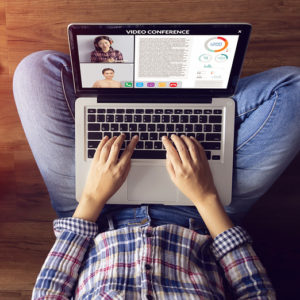The idea of “knowing” someone has slowly, then rapidly, changed in the Internet Era.
I have a colleague with whom I’ve worked in close proximity (at least until the pandemic) for three years. There’s another colleague (an extremely close friend of my wife’s and mine) who lives 800 miles away. We frequently communicate electronically and have often visited one another in person. These two colleagues and I work together on countless projects—by email, by telephone, by videoconference. The out-of-state colleague is coming to town, and I’ve arranged a meal for the three of us. I had no idea that they had never physically met, given their easy-going camaraderie. Given this surprising revelation, I’m delighted they’ll finally be in the same room together. It will be interesting to see how much better they “know” one another after a meal together.
I have a good friend, a terrific writer named Amy Alkon, who lives 3,000 miles away. I’ve known her for years, though we’ve never met in person. We haven’t even talked by phone or video. But over the years, we’ve developed a jovial relationship through public and private exchanges on Twitter. I “know” her well, but not in a sense that would have been understood in the pre-Internet era. (As a child, I had overseas pen pals, but I can’t say I ever “knew” any of them.) Amy told me that in the early 1990s, she belonged to a primordial online chat group. She got to “know” one of the other members of her group especially well, though, similarly, they had never met. She didn’t even know his name—only his username and the fact that he lived in Los Angeles. One day, she mentioned that she’d be visiting L.A. and wondered whether he would like to have lunch. He said he would. How, she asked, would she recognize him at the restaurant. His answer: “I’m Marlon Brando.” And he was! She eventually moved to L.A., and the two became friends in the traditional sense.
Lately, this tendency to “know” people you’ve never actually met has accelerated rapidly, owing to a conspiracy of broadband, Zoom, and COVID-19.
All of this mattered greatly to me in January, when I had a small health issue that erroneously seemed (for a few weeks) to be a gigantic, life-threatening problem. For five years, I’ve had mild hypertension and taken low-dosage meds. In January, my pressure started spiking repeatedly, making me feel quite ill. My primary-care physician of 14 years had just left the practice, so I had a new doctor who—owing to the pandemic—I had only met once via videocall. Still unvaccinated in January, I had no desire to visit her office, so she examined me by videocall and asked me to do some self-monitoring. (I have a pressure cuff and two devices allowing me to monitor my heart’s behavior.)
Shortly after, I experienced what seemed to be heart palpitations and tightening of the chest. I worried that it might be a coronary and took my first-ever ambulance ride. It was nothing, and the hospital sent me home. The new doctor and I exchanged tons of texts. We eventually met again—by video call—and went over the details of my monitoring. She changed my medications and sent me to a cardiologist for a treadmill stress test. (I passed with flying colors). My blood pressure returned to steady and low.
In the process, the doctor and I developed something of a friendship. She advised me on healthcare policy issues, and I quoted her in testimony before several state legislatures. Then, during a casual phone conversation, she dropped a bombshell. The U.S. Army had just transferred her husband to Hawaii, and she would follow shortly.
So, it turns out that, for a brief time, I had a wise and compassionate family doctor who showed great empathy, did a complex diagnosis, treated me effectively, coordinated my care with specialists, and became a friend. And in all likelihood, I will never actually meet her in person, though I feel we came to know each other quite well.
This ability to establish deep, meaningful relationships from afar is one of the most positive developments of our time.

